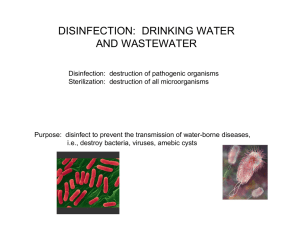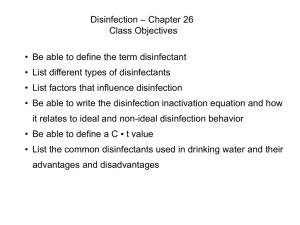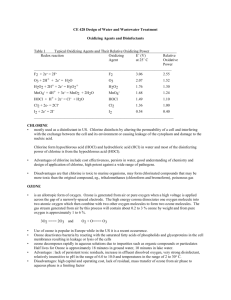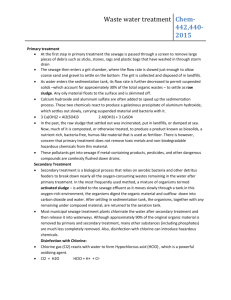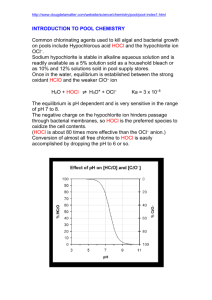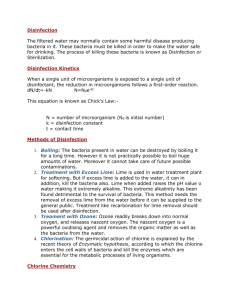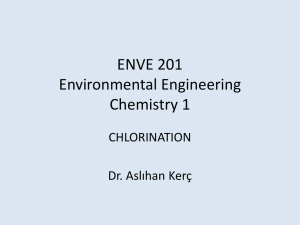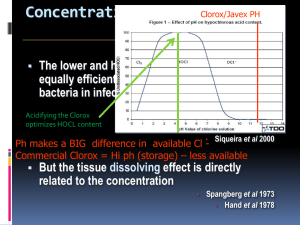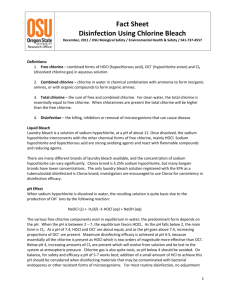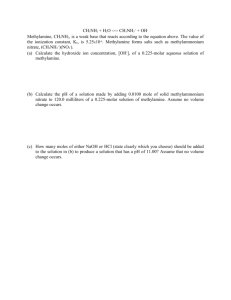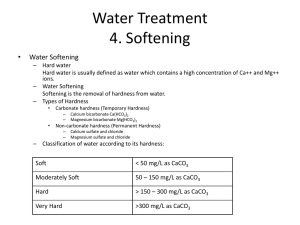Chlorination Fact Sheet (.doc)
advertisement
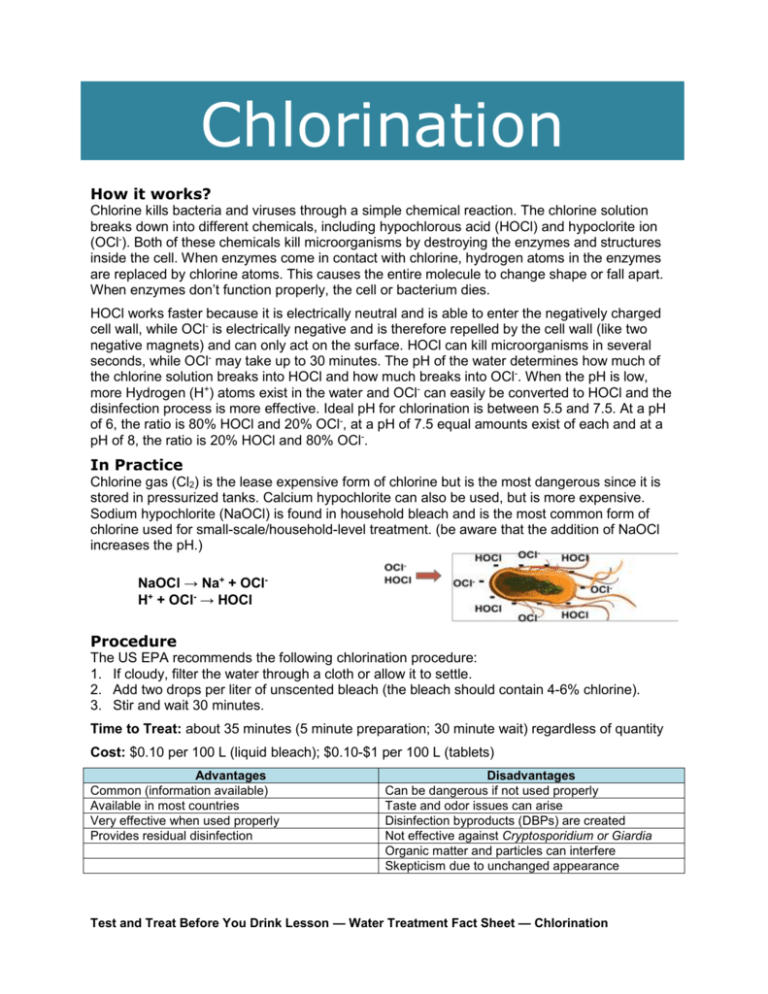
Chlorination How it works? Chlorine kills bacteria and viruses through a simple chemical reaction. The chlorine solution breaks down into different chemicals, including hypochlorous acid (HOCl) and hypoclorite ion (OCl-). Both of these chemicals kill microorganisms by destroying the enzymes and structures inside the cell. When enzymes come in contact with chlorine, hydrogen atoms in the enzymes are replaced by chlorine atoms. This causes the entire molecule to change shape or fall apart. When enzymes don’t function properly, the cell or bacterium dies. HOCl works faster because it is electrically neutral and is able to enter the negatively charged cell wall, while OCl- is electrically negative and is therefore repelled by the cell wall (like two negative magnets) and can only act on the surface. HOCl can kill microorganisms in several seconds, while OCl- may take up to 30 minutes. The pH of the water determines how much of the chlorine solution breaks into HOCl and how much breaks into OCl-. When the pH is low, more Hydrogen (H+) atoms exist in the water and OCl- can easily be converted to HOCl and the disinfection process is more effective. Ideal pH for chlorination is between 5.5 and 7.5. At a pH of 6, the ratio is 80% HOCl and 20% OCl-, at a pH of 7.5 equal amounts exist of each and at a pH of 8, the ratio is 20% HOCl and 80% OCl-. In Practice Chlorine gas (Cl2) is the lease expensive form of chlorine but is the most dangerous since it is stored in pressurized tanks. Calcium hypochlorite can also be used, but is more expensive. Sodium hypochlorite (NaOCl) is found in household bleach and is the most common form of chlorine used for small-scale/household-level treatment. (be aware that the addition of NaOCl increases the pH.) NaOCl → Na+ + OClH+ + OCl- → HOCl Procedure The US EPA recommends the following chlorination procedure: 1. If cloudy, filter the water through a cloth or allow it to settle. 2. Add two drops per liter of unscented bleach (the bleach should contain 4-6% chlorine). 3. Stir and wait 30 minutes. Time to Treat: about 35 minutes (5 minute preparation; 30 minute wait) regardless of quantity Cost: $0.10 per 100 L (liquid bleach); $0.10-$1 per 100 L (tablets) Advantages Common (information available) Available in most countries Very effective when used properly Provides residual disinfection Disadvantages Can be dangerous if not used properly Taste and odor issues can arise Disinfection byproducts (DBPs) are created Not effective against Cryptosporidium or Giardia Organic matter and particles can interfere Skepticism due to unchanged appearance Test and Treat Before You Drink Lesson — Water Treatment Fact Sheet — Chlorination
